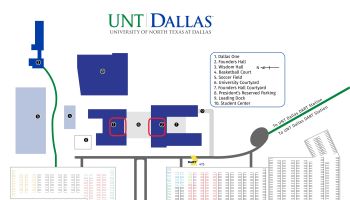The next group will be helping for our 30 Days of Giving is the Tarrant County Meals on Wheels program.
HOW CAN YOU HELP? Meals on Wheels of Tarrant County is in need of the following:
1. Meal delivery volunteers are needed in Central and Southeast Fort Worth
o Volunteers are asked to deliver meals one day each week.
o It takes about an hour to deliver one route usually between 10:30 and noon
o Volunteers must pass a criminal background check and attend orientation prior to beginning meal delivery
2. Substitute meal delivery volunteers to fill in for regular route drivers when they must be absent for illness or vacation
3. Cash Donations – each meal costs $5 to prepare fresh daily in our kitchen and deliver to the homes of the homebound elderly and disabled in Tarrant County
o $5 – one meal
o $25 – one week of meals
o $1,300 – one year of meals
Please Join us this week from 10am – 2pm at the following locations where you can sign up to be a volunteer or where you can drop of money for Meals On Wheels.
October 6th – Ridglea United Methodist 6036 Locke Ave, Fort Worth, TX 76116
Meal site is in the Friendship House
October 7th – Saintsville Cathedral 2200 Oakhill Rd, Fort Worth, TX 76112
October 8th – Meals on Wheels Tarrant County Headquarters 320 S. Freeway, Fort Worth TX 76104
The Face of Senior Hunger in America
In the United States, MOWAA-sponsored research has found that:
Texas was ranked 4th in the nation with the most senior citizens in need
Nearly six million seniors faced the threat of hunger in 2007.
11.4 percent of all seniors experienced some form of food insecurity.
Of these, about 2.5 million were at risk of hunger and about 750,000 suffered from hunger due to financial constraints.
Is hunger confined primarily to those who are poor?
No. The poor are more likely to be at-risk, but half of all at-risk seniors have incomes above the federal poverty line. And one in seven food insecure households have an annual income above twice the poverty line.
The Causes of Senior Hunger in America
(The following excerpts are from the 2008 study)
Our research revealed seniors were more likely to be at risk of hunger if they were:
A young senior between the ages of 60 and 64.
For example, seniors age 80 and older were less likely to be food insecure compared to 60-64 year olds. That is, an 84 year old is over one-third less likely to be at-risk of hunger than a 64 year old.
Living at or below the poverty line.
Households above 200 percent of the poverty line have nearly a 15 percentage point lower probability of being marginally food insecure than those living below the poverty line, a 6 percentage point lower probability of being food insecure, and a 2 percentage point lower probability of being very low food secure.
A high school dropout.
Holding income and other factors constant a high school graduate is 20 percent less likely to be at risk of hunger compared to a high school dropout, and a college graduate is 40 percent less likely.
An African-American or Hispanic.
Holding other factors constant, African-Americans are 75 percent more likely to be at risk of hunger than whites. Hispanics are 20 percent more likely than whites.
Divorced or separated, or living with a grandchild.
Marriage offered protection against food insecurity on a scale comparable to a high school diploma; that is, married couples were at about a 20 percent reduced probability of being at risk of hunger. Those seniors living with a grandchild; however, were about 50 percent more likely to be at risk of hunger compared to those with no grandchild.
Renters.
Homeowners have access to resources not similarly available to those seniors who rented, and thus homeowners faced about one-half the odds of being at-risk of hunger relative to the baseline.
The Health Consequences of Senior Hunger
There has been extensive work looking at the causes and consequences of nutrient-related deficiencies and other health outcomes among the elderly. However, much less research has been conducted on the health-related consequences of food insecurity among the elderly. We used data from the 1999-2002 National Health and Nutrition Examination Survey to examine the health consequences of hunger for Americans over the age of 60.
After controlling for other risk factors for poor health we find that seniors experiencing some form of food insecurity are:
Significantly more likely to have lower intakes of energy and major vitamins.
This holds across all the nutrient intake measures we considered. The effects are very strong. For example, across all the measures, the effect of being marginally food insecure is over twice as large (and generally much larger) than a move in income from one-to-two times the poverty line.
Significantly more likely to be in poor or fair health.
In comparisons of excellent or very good health versus good, fair, or poor health and comparisons of excellent, very good, or good health versus fair or poor health, we find a strong effect of marginal food insecurity. For sake of comparison, being marginally food insecure is similar to not having graduated from high school.
More likely to have limitations in activities of daily living (ADL).
Marginally food insecure are much more likely than fully food secure seniors to have ADL limitations. A senior at risk of hunger has the same chance of an ADL limitation as someone 14 years younger. That is, there is in effect a large disparity between actual chronological and “physical” age, so that a 64 year old senior suffering from hunger is likely to have the ADL limitations of a 78 year old.
The Future of Senior Hunger
Our research projected that:
In 2025, an estimated 9.5 million senior Americans will experience some form of food insecurity, about 75 percent higher than the number in 2005.
In 2025, an estimated 3.9 million senior Americans will be at-risk of hunger.
In 2025, an estimated 1 million senior Americans will suffer from hunger.
So, please come sign up to be a volunteer for Meals on Wheels of Tarrant County.











